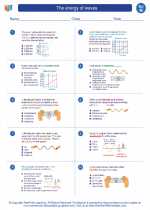Comparative Anatomy
Comparative anatomy is the study of similarities and differences in the anatomy of different species. It helps scientists understand the evolutionary relationships between organisms and provides insights into their shared ancestry.
Key Concepts
- Homologous Structures: These are structures that are similar in different species because they have common evolutionary origins. For example, the forelimbs of humans, cats, whales, and bats have similar bone structures, indicating a common ancestor.
- Analogous Structures: These are structures that serve similar functions in different species but do not have a common evolutionary origin. For example, the wings of birds and the wings of insects are analogous structures as they have evolved independently to serve the function of flight.
- Vestigial Structures: These are remnants of ancestral structures that have lost their original function in the course of evolution. Examples include the human appendix and the vestigial hind limbs in some snake species.
- Embryological Comparisons: By comparing the embryonic development of different species, scientists can identify similarities in early developmental stages that provide evidence of common ancestry.
Importance of Comparative Anatomy
Comparative anatomy is important for several reasons:
- It provides evidence for evolution and common ancestry.
- It helps in classification and understanding the relationships between different species.
- It aids in the study of adaptations and the functional significance of anatomical structures.
- It has practical applications in fields such as medicine, veterinary science, and evolutionary biology.
Study Tips
When studying comparative anatomy, consider the following tips:
- Compare and contrast the anatomical structures of different species to identify similarities and differences.
- Use diagrams, models, and comparative dissections to visualize the structures and understand their evolutionary significance.
- Explore the embryological development of different organisms to appreciate the similarities in early developmental stages.
- Practice identifying homologous, analogous, and vestigial structures in various organisms.
- Read about specific examples of comparative anatomy in different groups of organisms, such as vertebrates, invertebrates, and plants.
By understanding the principles of comparative anatomy, you can gain insights into the diversity of life on Earth and the relationships between different species.






